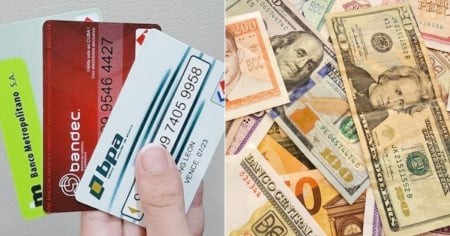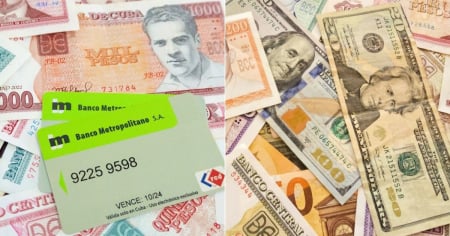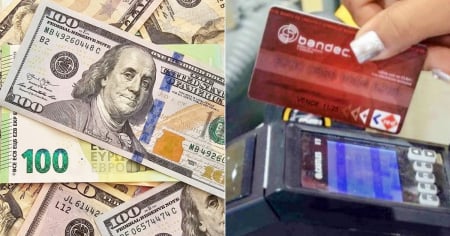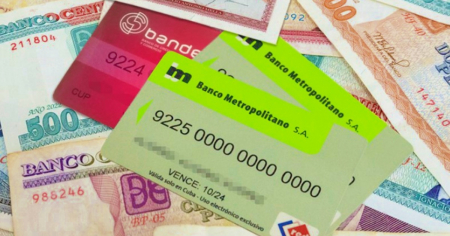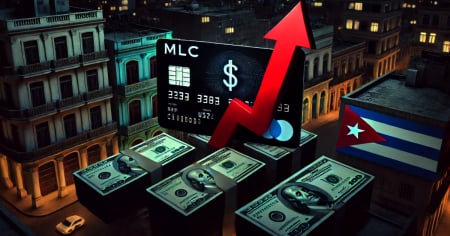The informal currency market in Cuba opens this Saturday unchanged for the second consecutive day, following a week marked by repeated increases in the freely convertible currency (MLC)
The US dollar remains valued at 340 CUP and the euro at 345 CUP.
In the case of the MLC, it remains at 270 CUP, as revealed by elToque.
The virtual currency used by the regime in certain stores, which some believe is doomed to disappear, has risen by a total of 25 pesos since February 14.
It is an unusual movement, given that since the end of the year, currencies have shown a tendency towards stability.
Exchange Rate Evolution
Exchange rate today 02/22/2025 - 9:50 a.m. in Cuba:
Exchange rate of the dollar USD to CUP according to elTOQUE: 340 CUP.
Exchange rate of the euro EUR to CUP according to elTOQUE: 345 CUP.
Exchange rate from MLC to CUP according to elTOQUE: 270 CUP.
The unexpected revaluation of the MLC: Why has it risen?
The revaluation of the freely convertible currency confuses both Cubans and economists.
The paradox lies in the fact that, despite fewer and fewer stores on the island accepting this currency, its value has increased instead of decreasing, as one would expect in a low-demand scenario.
The economist Pavel Vidal suggests that this increase could merely be "a temporary correction" following a significant drop in its value earlier this year.
In a recent report from the Observatorio de Monedas y Finanzas de Cuba (OMFi) by El Toque, Vidal explained that this type of adjustment is common "after a sudden change in prices."
Additionally, it notes that "the rigidity of prices in consumer markets, under conditions of marked scarcity, creates price differentials that fuel arbitrage operations."
This phenomenon, the economist adds, could be one of the reasons behind the temporary increase in demand for MLC.
Arbitration and business opportunities
Social media has offered other hypotheses.
A user suggested that the shortage of products in state-run stores that accept MLC could be an underlying cause.
According to the explanation, “there must be something, some product that someone has realized can be purchased in MLC and sold for Cuban pesos at the exchange rate of El Toque to generate a clean profit.”
In that regard, another user provided a more specific response: "In the MLC stores, they are taking out cigarettes and people are going crazy looking for MLC for business and personal consumption."
"It's called arbitrage, buy low and sell high with no risk or very little risk. And a product, the cigarette, has low price elasticity of demand. In other words, it doesn't matter what the price is; the smoker is going to buy cigarettes," he stated.
"The price of cigars in MLC is marked up more than double their cost. It's a quick and lucrative business. Everyone knows it's a temporary situation, which is why they are rushing and the MLC is rising, for now," noted another commenter.
Other users suggest that it's not just cigarettes influencing this trend. Products such as eggs, yogurts, sausages, detergent, or soap might also be driving the increasing demand for MLC.
These goods, cheaper in stores that accept this currency, are resold in Cuban pesos with significant profit margins.
A trend that could be fleeting
Despite these recent movements, Pavel Vidal insists that the fluctuations observed in recent weeks do not alter the downward trend that the MLC has shown in the informal market over the past two years.
Meanwhile, the regime is moving towards a declared dollarization of its sales, accepting cash or cards such as VISA, MasterCard, and Clásica, the latter operated by the government.
It is hard to doubt the downfall of the Freely Convertible Currency, as the Cuban regime reopened the doors of the Infanta and Santa Marta Market in Havana last week, offering a wide range of products but with a significant change in its payment system: it no longer accepts Freely Convertible Currency (MLC).
Although it previously allowed transactions in MLC, it now only accepts payments with VISA, MasterCard, MIR, and prepaid cards issued by BANDEC, AIS, Viajero, and Clásica, the latter offering a 5% discount on purchases.
In addition to the mentioned spaces, the regime has authorized more than a dozen wholesale and retail stores in foreign currency, eight of which are linked to the MINCIN business system.
Frequently Asked Questions about the Currency Black Market in Cuba
What is the current exchange rate for the dollar, euro, and MLC in the Cuban black market?
In the Cuban informal market, the dollar is priced at 340 CUP, the euro at 345 CUP, and the Convertible Currency (MLC) at 270 CUP, according to the latest report from elToque.
Why has the value of the Convertible Currency (MLC) increased in Cuba?
The value of the MLC has increased due to factors such as price rigidity in consumer markets and arbitration opportunities. The shortage of products in stores that accept MLC has driven a temporary demand for this currency, despite the trend towards its disappearance in the context of the partial dollarization of the Cuban economy.
What factors influence the fluctuation of exchange rates in the informal Cuban market?
The exchange rates in the Cuban informal market are influenced by the scarcity of basic products that can only be purchased in foreign currency, partial dollarization, and the overall economic uncertainty on the island. The lack of an efficient official exchange market and inflationary pressures also play a key role in the volatility of exchange rates.
Filed under:

